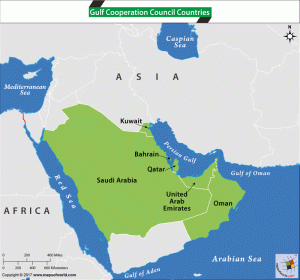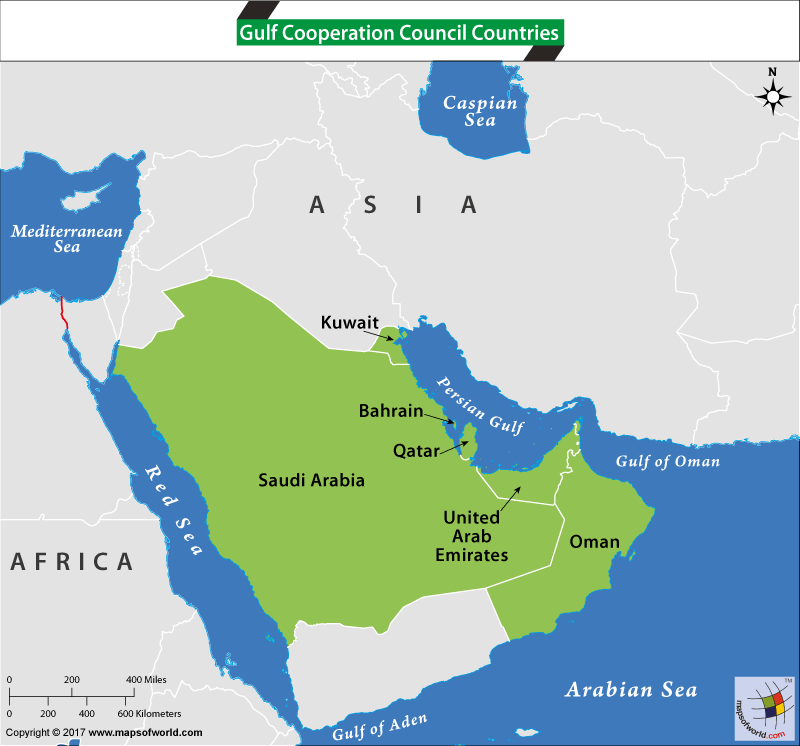The Strait of Hormuz, a narrow maritime chokepoint between the Persian Gulf and the Gulf of Oman, is one of the most strategically vital waterways in the world. Approximately 21 million barrels of oil per day—nearly 20% of global oil consumption—pass through this strait, making it indispensable to the economies of the Arab Gulf states (U.S. Energy Information Administration [EIA], 2023). Any blockade or disruption in this critical passage would have severe repercussions for the Gulf Cooperation Council (GCC) countries—Saudi Arabia, the United Arab Emirates (UAE), Kuwait, Qatar, Bahrain, and Oman—whose economies are heavily reliant on hydrocarbon exports.
This article provides a multi-dimensional analysis of the potential economic consequences of a Hormuz Strait blockade, examining impacts on oil revenues, trade diversification efforts, regional stability, and alternative export routes. The analysis draws on credible sources, including reports from the International Energy Agency (IEA), World Bank, and Gulf-based research institutions.

1. The Strait of Hormuz: A Geopolitical and Economic Lifeline
The Strait of Hormuz is the primary maritime route for oil exports from Saudi Arabia, the UAE, Kuwait, Qatar, and Iraq. According to the EIA (2023), about 80% of the GCC’s oil exports transit through this strait. A blockade—whether due to military conflict, geopolitical tensions, or sabotage—would immediately disrupt global energy markets.
Past disruptions, such as the 1980s Tanker War during the Iran-Iraq conflict, led to spikes in oil prices and increased shipping insurance costs (Brendan R. Gallagher, Geopolitics of the Strait of Hormuz, 2020). More recently, tensions between Iran and the U.S. have raised concerns about potential closures, with Iran repeatedly threatening to block the strait in response to sanctions (Reuters, 2022).
2. Immediate Economic Impacts on GCC Economies
A blockade of the Strait of Hormuz would trigger an immediate economic shock across the GCC, primarily due to the region’s heavy dependence on oil exports. According to the World Bank (2023), a prolonged disruption could halt $1.2 trillion in annual oil exports, severely straining government budgets. Countries like Saudi Arabia and Kuwait, where oil revenues account for 80-90% of fiscal income, would face drastic budget cuts, potentially delaying key Vision 2030 projects and infrastructure investments. The UAE and Qatar, though slightly more diversified, would still experience significant revenue losses, given that hydrocarbons contribute 60-70% of their GDP.
Beyond oil, financial markets would react sharply. GCC stock exchanges, particularly Tadawul (Saudi Arabia) and ADX (UAE), are highly sensitive to oil price fluctuations. A blockade could replicate the 2019 Abqaiq drone attacks, where Saudi stocks fell by 3% in a single day (Bloomberg, 2019). Additionally, inflation would surge as the GCC imports 90% of its food and consumer goods via maritime routes (Gulf Research Center, 2022). Shipping delays and rerouting through longer pathways, such as around the Cape of Good Hope, would escalate costs, further straining local economies.
Oil Revenue Losses
A prolonged blockade could halt $1.2 trillion in annual oil exports from the GCC (World Bank, 2023). Given that hydrocarbons account for:
- 80-90% of government revenues in Saudi Arabia and Kuwait
- 60-70% in the UAE and Qatar (IMF, 2023)
A shutdown would force drastic budget cuts, delaying Vision 2030 projects in Saudi Arabia and economic diversification plans in the UAE.
Stock Market and Investor Confidence
GCC stock markets, particularly Tadawul (Saudi Arabia) and ADX (UAE), are highly sensitive to oil price fluctuations. A blockade would trigger a market sell-off, similar to the 2019 Abqaiq drone attacks, which saw Saudi stocks drop by 3% in a single day (Bloomberg, 2019).
Inflation and Supply Chain Disruptions
Since the GCC imports 90% of its food and consumer goods via maritime routes (Gulf Research Center, 2022), a blockade would cause:
- Sharp inflation in food prices
- Delays in industrial supply chains
- Increased shipping costs due to rerouting
3. Long-Term Structural Consequences
The long-term economic fallout from a Hormuz blockade would extend beyond immediate oil disruptions, affecting the GCC’s diversification strategies and regional trade dynamics. Despite significant investments in non-oil sectors—such as tourism, finance, and technology—a prolonged crisis would deter foreign direct investment (FDI) due to perceived geopolitical instability. Mega-projects like NEOM in Saudi Arabia and Dubai Expo 2030 could face delays, undermining efforts to reduce hydrocarbon dependency.
Alternative export routes, though available, remain insufficient to fully compensate for the strait’s closure. The UAE’s Fujairah Pipeline, bypassing Hormuz, can only handle 1.5 million barrels per day (bpd), a fraction of the country’s total exports. Similarly, Saudi Arabia’s East-West Pipeline has a capacity of 5 million bpd, but expanding it would require time and capital (Saudi Aramco, 2022). Oman’s Port of Duqm has emerged as a potential alternative, but its infrastructure is not yet equipped for large-scale exports (Oxford Institute for Energy Studies, 2021).
Regionally, a blockade could either strengthen GCC unity through coordinated crisis response or expose divisions, particularly between Qatar (which relies on LNG exports) and Saudi Arabia (which dominates oil markets). The crisis could also accelerate intra-GCC trade agreements, reducing reliance on external shipping routes.
| Section | Key Points |
|---|---|
| Diversification Challenges | GCC nations have invested in non-oil sectors (tourism, finance, tech), but a blockade would: • Reduce FDI inflows due to perceived instability • Delay megaprojects like NEOM (Saudi Arabia) and Dubai Expo 2030 |
| Alternative Export Routes: Feasibility and Costs | Some GCC countries have contingency plans: • UAE’s Fujairah Pipeline – Bypasses Hormuz; exports 1.5 million bpd (insufficient for total capacity) (EIA, 2023) • Saudi East-West Pipeline – 5 million bpd capacity but requires expansion (Saudi Aramco, 2022) • Oman’s Port of Duqm – Emerging alternative but lacks large-scale export infrastructure (Oxford Institute for Energy Studies, 2021) |
| Regional Trade and GCC Unity | A blockade could either: • Strengthen GCC cohesion (joint crisis response) • Expose divisions (e.g., Qatar’s LNG reliance vs. Saudi oil dominance) |
–
4. Global Repercussions and Market Reactions
A Hormuz blockade would send shockwaves through global energy markets, with oil prices potentially doubling to $200 per barrel (Goldman Sachs, 2022). Such a spike would heighten recession risks, particularly in energy-dependent economies like China, India, and Japan, which collectively import 65% of their oil from the Gulf (IEA, 2023). Emerging markets with high fuel subsidies, such as Egypt and Pakistan, would face severe fiscal strain.
Western nations would likely respond with emergency measures, including the release of strategic petroleum reserves and increased diplomatic pressure on Iran. The U.S. Fifth Fleet in Bahrain might interfer in regional issues and interrupt naval patrols, while Europe could fast-track renewable energy investments to reduce dependency on Gulf oil. However, short-term alternatives, such as Russian or U.S. shale oil, would be insufficient to fully offset the supply gap, leading to sustained market volatility.
Oil Price Shock
Analysts predict a blockade could double oil prices to $200/barrel (Goldman Sachs, 2022) or more, triggering: Global recession risks and Energy shortages in Asia (China, India, Japan).
U.S. and European Responses
Western nations may:
- Release strategic petroleum reserves
- Increase pressure on Iran diplomatically
- Accelerate green energy transitions
5. Mitigation Strategies and Future Outlook
To mitigate the risks of a Hormuz blockade, GCC nations must adopt a multi-pronged approach. Strengthening strategic oil reserves is critical; agreements with India and China to store crude in their facilities could provide temporary relief. The UAE’s partnership with India’s Strategic Petroleum Reserve (SPR) and Saudi Arabia’s oil stockpiling deals with China are steps in the right direction.
Diplomatic and military deterrence will also play a key role. The U.S. military presence in Bahrain and GCC-led maritime security initiatives could help safeguard the strait. Additionally, economic resilience can be enhanced through digitalization—such as the UAE’s central bank digital currency (CBDC) for trade finance and AI-driven logistics optimization to manage supply chain disruptions.
Looking ahead, the GCC must accelerate investments in alternative export routes and renewable energy to reduce vulnerability. While a Hormuz blockade remains a worst-case scenario, proactive planning can help cushion its economic impact and ensure long-term stability.
Strengthening Strategic Reserves
GCC countries are expanding storage facilities, such as:
- India’s Strategic Petroleum Reserve (SPR) agreements with UAE
- China’s oil stockpiling deals with Saudi Arabia
Diplomatic and Military Deterrence
- U.S. Fifth Fleet presence in Bahrain
- GCC-led maritime security initiatives
Economic Resilience Through Digitalization
- Blockchain-based trade finance (UAE’s CBDC initiatives)
- AI-driven supply chain optimization
Conclusion
A blockade of the Strait of Hormuz would be catastrophic for the GCC economies, causing immediate oil revenue losses, stock market volatility, and long-term diversification setbacks. While contingency plans exist, they are insufficient to fully offset the strait’s strategic importance. The GCC must accelerate alternative export routes, deepen economic resilience, and enhance diplomatic coordination to mitigate such risks.
References
-
U.S. Energy Information Administration (EIA). (2023). World Oil Transit Chokepoints. Link
-
International Monetary Fund (IMF). (2023). GCC Economic Outlook. Link
-
World Bank. (2023). Global Economic Prospects. Link
-
Goldman Sachs. (2022). Oil Market Disruptions and Price Scenarios. Link
-
Gulf Research Center. (2022). Food Security in the GCC. Link

